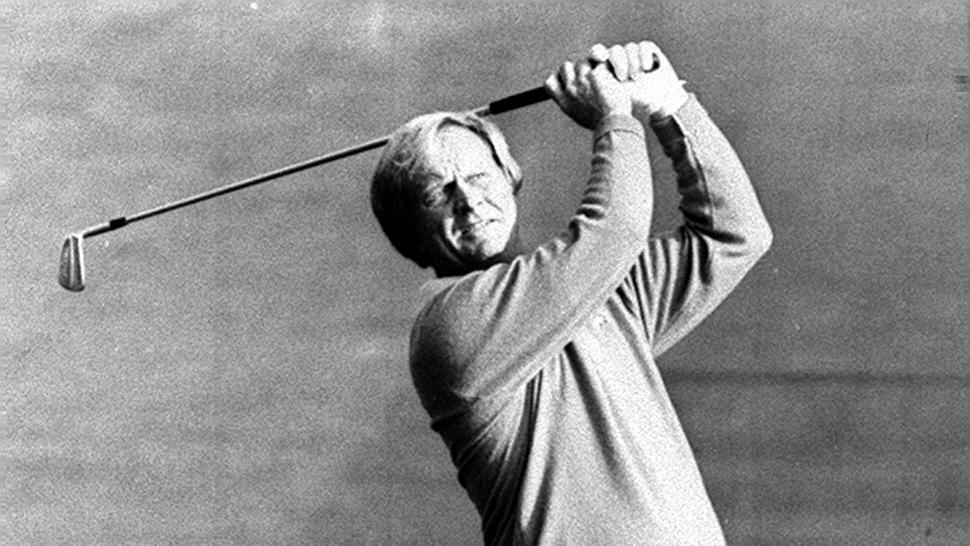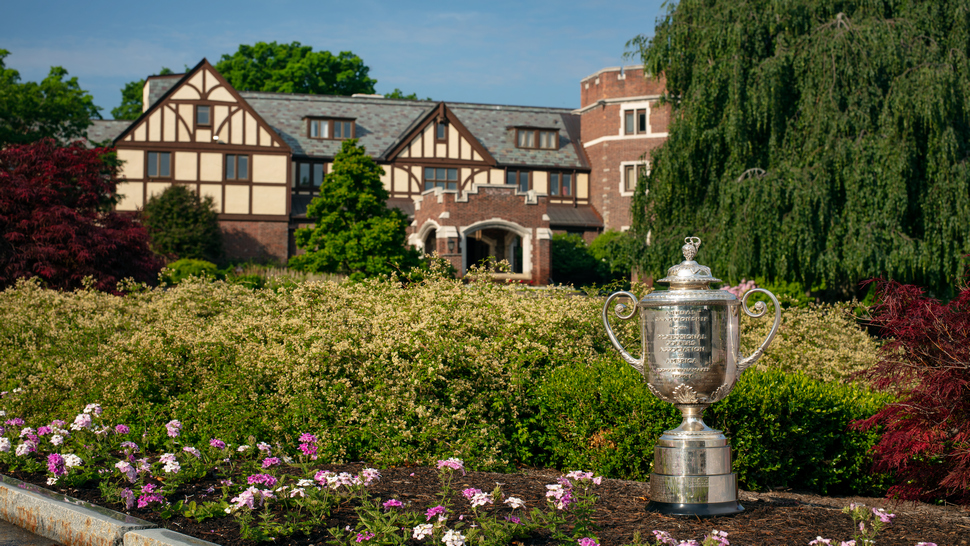Pittsford, New York. The famed comedian Rodney Dangerfield used the expression, “I don’t get any respect.” and the same can be said for the PGA Championship.
When held against the likes of The Masters, the U.S. Open and The Open Championship, the PGA Championship has been consistently viewed as the low rung on the totem pole of prestige.
Through the years the PGA of America has sought to elevate the stature of the event which dates back to 1916.
From its inception through 1957 the event was contested as match-play. In that time period the name of Walter Hagen rose to prominence with a record five titles, four of them coming in succession. The Rochester-born Hagen excelled at match play because of inner mental strength and always believing he could win any match.

Despite the prominence of Hagen and other key players such as Byron Nelson, Sam Snead and Ben Hogan the utter vagaries of match play could also produce final matches where two little known players would compete for the famed Wannamaker Trophy.
The move to four-rounds of stroke play in 1958 was an admission that the PGA Championship needed to fit into the needs of television. Network executive wanted some sort of certainty that key stars would still be around for the conclusion of the event even if not able to win the event.
The 1958 event was the start of several PGA Championships played mainly in the month of July. By 1969 the event would shift one month later and remain in the August time frame through 1971 when the brain trust for the PGA of America opted to play their marquee event in Florida in February. That event was won by Jack Nicklaus but the August time frame would return through the 1986 event. Inexplicably, the PGA of America decided to have Florida stage the event again in 1987 but this time in the high heat and humidity of August. The event was a debacle and the pushback from players was overwhelmingly negative.
From 1988 through 2018 the PGA Championship would return to the August time frame and in an attempt to bolster its appeal via the tagline, “The Season’s Final Major, Glory’s last shot,” was added for a number of those years to provide a bit of marketing boost. By 2014 the tagline was permanently retired as the PGA TOUR was concerned such usage of that tagline would only serve to undercut the recently created Fed-Ex Cup Playoffs.

The most interesting of changes came when the PGA of America and the PGA TOUR opted to switch two events, the PGA Championship and The Players Championship, with their respective dates on the calendar.
The TOUR wanted to conclude the Fed-Ex Cup Playoffs before the start of NFL and collegiate football. For that to happen, the PGA Championship would need to leave the August time slot. In concert The Players was moved back to its original time in March after having been scheduled to May for several years. The PGA Championship would then take the vacated May slot.
There’s little question the move to May has bolstered the PGA Championship as the event is neatly bracketed between The Masters in April and the U.S. Open in June. The general weather pattern has also benefited the PGA because the previous August time frame had often meant playing the championship in torrid temperatures.
The May time slot has also opened the door to a range of different venues because the timing is in better alignment with courses being showcased at their fullest potential before the long hot days of summer intrude.
The remaining question is does a standard 72-hole format still work well for the PGA Championship and would a revised format serve as an impetus in gaining more fanfare not only in the States but globally.

Returning to an all-match-play format will not work because of the previously stated concerns of a final match resulting in a contest of either one-sidedness and/or lacking real star power.
But what if a hybrid approach is followed that blends both formats?
One can review how the Western Amateur is conducted, one of the most prestigious amateur titles to win. That event features a 72-hole tournament with all competing for 16 spots. The rest of the event then uses a match-play format with a 36-hole final. That format has propelled a variety of talented amateurs to victory. The USGA does a similar type format with the U.S. Amateur with 36 holes of on-site qualifying for 64 positions for match play.
Given the necessity in streamlining matters what about the following format for the PGA Championship?
Players globally ranked 1-32 would be exempt from playing in a 36-hole on-site qualifier featuring a field of 150 players. The low 32 players would join the previously exempt 32 players to compete in two rounds of match play.

Related: 2023 PGA Championship notes
The seeding would have the low 32 stroke play qualifiers play in reverse order those already seeded via world rankings. For example, the top finisher in the stroke play qualifier would match up against the 32-ranked player. The final qualifier from stroke play would be paired against the number one seeded world ranked player.
The excitement of this “new” format would mean all sorts of pressures as players battle for final positions before entering the match-play portion. It is not inconceivable that a number of players could find themselves in a playoff for the final slots available.
After two rounds of match play the final 16 players would then play two daily rounds of 18 holes to determine the winner of the Wannamaker Trophy.
Sone will say such a new format would be a contrivance and lack any true meaning to be worthy of consideration.
I beg to differ. The inclusion of both stroke and match-play would also add a layer of suspense that’s often times missing.

Great players such as Jack Nicklaus and Tiger Woods won with different formats throughout their careers. The elite players of today would still show the form needed to win no matter the format.
In all probability, the PGA Championship will never rise above the other three majors following the same 72-hole all stroke-play format. Yes, the PGA of America is now staging the PGA Championship at storied clubs and that has helped considerably with Oak Hill a clear testament to that. But, at the end of the day, the PGA Championship is just following the lead of others.
Over the years the leadership of the PGA of America has sought a number of different remedies in order to have its flagship event become better appreciated. Not all those attempts went extremely well but the desire to always be open to improvement still must be front and center.
Format changes are big decisions but the modern Grand Slam has only three heavyweights now. The PGA of America can honor its original foundation with a return to a more engaging format with plenty of twists and turns. Dangerfield’s famous phrase of “I don’t get any respect” has an apt reality for the PGA Championship.
A bold move could well mean earning the long overdue respect that’s been missing.
